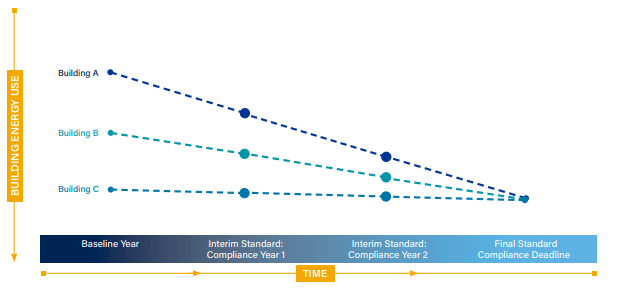Today, I was honored to provide testimony to the Montgomery County Council in support of the County’s Building Energy Performance Standard (BEPS) legislation. Below are some of the key points I offered in support of the bill as today’s hearing.
IMT provided technical assistance and helped facilitate the stakeholder group that advised the County as it developed the legislation. Montgomery County and its stakeholders have developed an innovative policy that will serve as a model for other governments considering building performance standards.
As recounted in my colleague Zack Hart’s blog, in adopting the BPS, Montgomery County would become the first county to adopt building performance standards. The BPS will address energy use in buildings, the biggest component of the County’s greenhouse gas emissions. It will be a big step toward putting the County on path to meet the ambitious commitment in its climate emergency declaration. Similar to other BPS, the County’s BPS will set site energy use intensity (EUI) standards for commercial and multifamily buildings 25,000 square feet and larger.
The BPS will drive private owners to make ambitious value-creating investments in their own buildings and create design and construction jobs for the County’s residents. The bill’s central innovation is its “trajectory approach,” which IMT originated and which is included in our model BPS ordinance. The approach uses a combination of long- and short-term performance standards to provide building owners with regulatory certainty and appropriate flexibility to accommodate typical capital planning cycles, while still pushing owners to improve their properties at the earliest opportunity. This strategy will help the county overcome short-term economic shocks like the COVID-19 pandemic.

IMT is working with more than a dozen jurisdictions developing or considering BPS. If your jurisdiction is interested in learning more, please check out our BPS resources and contact Zack Hart.
